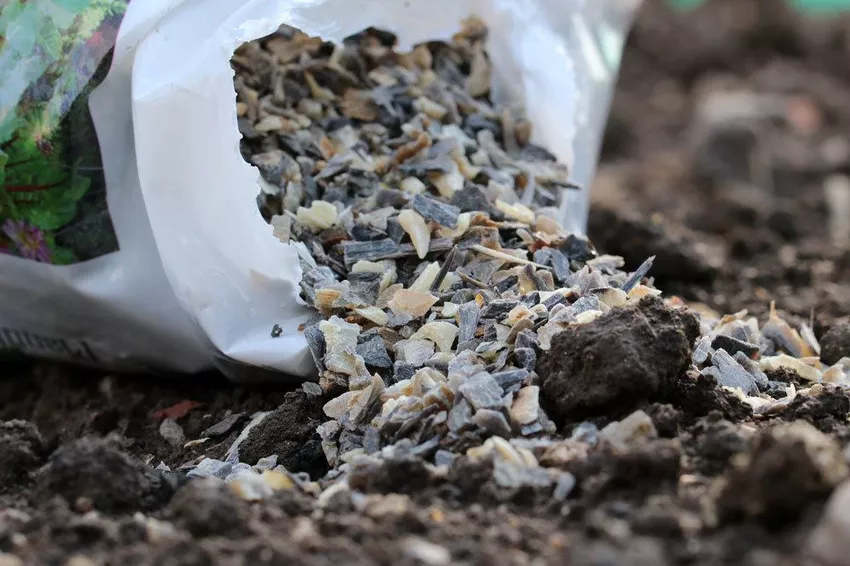- components of the potting soil
- Potting soil for vegetables
- application
- Attention peat
- Special case growing soil
- Mix potting soil for vegetable plants yourself
- frequently asked Questions

The choice of potting soil is large. Different types are even available in the supermarket. Is special soil required for growing vegetables or is conventional potting soil sufficient? We have put together the most important facts.
In a nutshell
- Potting soil is sufficient for almost all plants
- it is cheaper but also poorer in nutrients than special soil for vegetables
- by adding organic fertilizer and clay minerals, it can be adapted to the needs of the vegetable crops
components of the potting soil
Ordinary potting soil consists of a basic substrate, for example compost, humus or peat.
The quality depends on the addition of other substances. This can be quartz sand, perlite and clay minerals. The pH value of the mixture determines its possible uses. The addition of lime regulates the pH value. The pH of ordinary potting soil is between 6 and 7.

Potting soil for vegetables
Ordinary potting soil is sufficient for most plants, including vegetables. However, this is poorer in nutrients than special soil for vegetables. Regular fertilization is required. The special soil for tomatoes and vegetables offered in specialist garden shops often contains guano, a natural fertilizer that promises healthy plants and good yields. The basis of good potting soil for vegetable plants is humus. Clay minerals are added to the special soil so that the plants can absorb the nutrients well.
Choose simple, hummus-based potting soil for your vegetables. Add clay minerals for nutrient and water retention. Provide regular fertilization with guano or other organic fertilizers. This way you save money and benefit from healthy plants.
application
- Loosen up the root ball of the vegetable plants
- Remove excess soil, cut roots that are too long
- Dig a planting hole twice the size of the root ball
- Fill the planting soil in the planting hole or in the planter
- Plant carefully
- fill up with soil
- Press and water the surface
Attention peat
Especially the cheapest potting soils consist mainly of peat. Peat is said to promote plant growth. It has long been known that the use of peat-containing substrates does not have a favorable effect on vegetable cultivation. Peat is low in nutrients and makes the soil acidic. The pH of peat is 3.5 to 3.7.
When peat is cut, valuable moor forests disappear and with them the habitats for rare plants and animals. Peatlands are important carbon sinks.

The better alternative for the garden is to use peat-free potting soil. Humus bark, wood fibers, coconut fibers and compost from green waste are suitable as environmentally friendly peat substitutes. If you create a compost heap and regularly supply your beds with compost soil, you don't have to worry about the nutrient supply of ornamental and useful plants.
Tip: Look for the “peat-free” or “peat-free” labels on the product packaging.
Special case growing soil
Small plants have different requirements than large ones. If you want to grow vegetable plants from seeds, you should use special potting soil. This contains fewer nutrients than potting or vegetable soil. High nutrient concentrations damage the young plants.
Growing soil is fine-grained and loose. It is sterilized during production and therefore contains no fungal spores, pests or germinable seeds of other plant species.
Mix potting soil for vegetable plants yourself
Manual:
- Put 30 liters of garden soil, 20 liters of sieved mature compost and 5 liters of clay in a large container.
- Mix these together well. 3. Spread the mixture on the beds or put it in the planting holes.
- Scatter horn shavings, horn semolina or rock dust on the beds and work them into the surface.
Tip: Place crushed nettle leaves in the planting hole before planting the vegetable plants. This fertilization ensures a good start for tomatoes, courgettes, cucumbers and pumpkins.
 horn shavings
horn shavings
frequently asked Questions
How do you recognize high-quality potting soil?Particularly inexpensive potting soil often contains inferior fillers and too much salt, which damages the plants. Good potting soil has an earthy smell. They are fluffy, evenly grained and well blended. Biological fertilizers such as guano or horn shavings can be added.
How long does potting soil last?
Potting soil can be kept for at least half a year in a closed bag if stored cool. If the bag has already been opened, an inspection is required before use. If pests have settled in, discard the substrate. If there are no abnormalities, mix the potting soil with fresh humus. Then nothing stands in the way of further use.
How should potting soil be stored?Store potting or potting soil tightly closed in a dry place in a cool, sheltered room. The basement, the garage or the greenhouse that is not used in winter are suitable places. High temperatures and humidity can cause mold growth. Protect opened packs from pests and weed seed nesting.